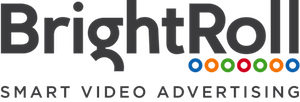A web banner or banner ad is a form of advertising on the World Wide Web delivered by an ad server. This form of online advertising entails embedding an advertisement into a web page. It is intended to attract traffic to a website by linking to the website of the advertiser. In many cases, banners are delivered by a central ad server. This payback system is often how the content provider is able to pay for the Internet access to supply the content in the first place. Usually though, advertisers use ad networks to serve their advertisements, resulting in a revshare system and higher quality ad placement.
Digital display advertising is graphic advertising on Internet websites, apps or social media through banners or other advertising formats made of text, images, video, and audio. The main purpose of display advertising is to deliver general advertisements and brand messages to site visitors. A display ad is usually interactive, which allows brands and advertisers to engage deeper with the users. A display ad can also be a companion ad for a non-clickable video ad.
Google AdSense is a program run by Google through which website publishers in the Google Network of content sites serve text, images, video, or interactive media advertisements that are targeted to the site content and audience. These advertisements are administered, sorted, and maintained by Google. They can generate revenue on either a per-click or per-impression basis. Google beta-tested a cost-per-action service, but discontinued it in October 2008 in favor of a DoubleClick offering. In Q1 2014, Google earned US$3.4 billion, or 22% of total revenue, through Google AdSense. AdSense is a participant in the AdChoices program, so AdSense ads typically include the triangle-shaped AdChoices icon. This program also operates on HTTP cookies. In 2021, over 38.3 million websites use AdSense.

Google Ads is an online advertising platform developed by Google, where advertisers bid to display brief advertisements, service offerings, product listings, or videos to web users. It can place ads both in the results of search engines like Google Search and on non-search websites, mobile apps, and videos. Services are offered under a pay-per-click (PPC) pricing model.
Click fraud is a type of fraud that occurs on the Internet in pay-per-click (PPC) online advertising. In this type of advertising, the owners of websites that post the ads are paid based on how many site visitors click on the ads. Fraud occurs when a person, automated script, computer program or an auto clicker imitates a legitimate user of a web browser, clicking on such an ad without having an actual interest in the target of the ad's link in order to increase revenue. Click fraud is the subject of some controversy and increasing litigation due to the advertising networks being a key beneficiary of the fraud.
Out-of-home (OOH) advertising, also called outdoor advertising, outdoor media, and out-of-home media, is advertising experienced outside of the home. This includes billboards, wallscapes, and posters seen while "on the go". It also includes place-based media seen in places such as convenience stores, medical centers, salons, and other brick-and-mortar venues. OOH advertising formats fall into four main categories: billboards, street furniture, transit, and alternative.
Online advertising, also known as online marketing, Internet advertising, digital advertising or web advertising, is a form of marketing and advertising which uses the Internet to promote products and services to audiences and platform users. Online advertising includes email marketing, search engine marketing (SEM), social media marketing, many types of display advertising, and mobile advertising. Advertisements are increasingly being delivered via automated software systems operating across multiple websites, media services and platforms, known as programmatic advertising.

BrightRoll was a programmatic video advertising platform that was acquired by Yahoo!. BrightRoll's video platform became Yahoo's primary video advertising marketplace and demand-side platform. The BrightRoll brand was discontinued by Verizon Media the parent company of Yahoo in favor of Verizon Media Video SSP after the company merged Yahoo and AOL and consolidated the Ad platforms during 2017-2018 to phase out duplicate platforms.

Timothy M. Armstrong is an American business executive. He is the founder and chief executive officer of Flowcode, the offline to online company, building direct connections for brands and consumers through next generation QR technology. He was formerly the CEO of Oath Inc., a subsidiary of Verizon Communications that serves as the umbrella company of its digital content subdivisions, including AOL and Yahoo!. Previously, he was the CEO of AOL Inc. from 2009 until its purchase by Verizon in 2015.
A supply-side platform (SSP) or sell-side platform is a technology platform to enable web publishers and digital out-of-home (DOOH) media owners to manage their advertising inventory, fill it with ads, and receive revenue. Many of the larger web publishers of the world use a supply-side platform to automate and optimize the selling of their online media space.
A demand-side platform (DSP) is a system that allows buyers of digital advertising inventory to manage multiple ad exchange and data exchange accounts through one interface. Real-time bidding for displaying online advertising takes place within the ad exchanges, and by utilizing a DSP, marketers can manage their bids for the banners and the pricing for the data that they are layering on to target their audiences. Much like Paid Search, using DSPs allows users to optimize based on set Key Performance Indicators such as effective cost per click (eCPC), and effective cost per action (eCPA).
Real-time bidding (RTB) is a means by which advertising inventory is bought and sold on a per-impression basis, via instantaneous programmatic auction, similar to financial markets. With real-time bidding, advertising buyers bid on an impression and, if the bid is won, the buyer's ad is instantly displayed on the publisher's site. Real-time bidding lets advertisers manage and optimize ads from multiple ad-networks, allowing them to create and launch advertising campaigns, prioritize networks, and allocate percentages of unsold inventory, known as backfill.

Anthony Rushton is a British tech entrepreneur and the co-founder and chief executive officer of Telemetry, an online video advertising security and optimisation firm.
Viamedia provides ad sales management and monetization solutions for cable TV operators, MVPD's, telcos, OTT/streaming and video providers across the US. Viamedia is one of the industry's leading cross-media advertising solutions providers for local, regional and national businesses and brands. The company currently has more than 12,000 active and prospective advertisers nationwide.
TubeMogul is an enterprise software company for brand advertising.
Integral Ad Science (IAS) is an American publicly owned technology company that analyzes the value of digital advertising placements. Integral Ad Science is known for addressing issues around fraud, viewability and brand risk, as well as TRAQ, a proprietary media quality score.
SpotX is a global video advertising and monetization platform., providing digital media owners with a solution that allows them to monetize their content with video advertising across desktop, mobile, and over-the-top (OTT) or connected TV (CTV) devices. Billions of video ad decisions are transacted through the SpotX platform daily, with ads delivered to over 70 million US households. The company is headquartered north of Denver, Colorado with additional offices worldwide, including Belfast, London, New York, Salt Lake City, San Francisco, Singapore, Sydney, and Tokyo.
Videology is an advertising software company based in New York City. It was founded in 2007 as Tidal TV and launched a Hulu competitor in 2008. In 2012, it was rebranded as Videology and now develops software that sends ads to specific demographics within an audience of video viewers, performs analytics, and other functions.
Innovid is an online advertising technology company that offers services used by advertisers and publishers for the distribution and management of digital ads. Originally launched as a video marketing platform, the company expanded its offering to include display and digital out-of-home when Herolens was acquired in 2019.
Ad fraud is concerned with the practice of fraudulently representing online advertisement impressions, clicks, conversion or data events in order to generate revenue. Ad-frauds are particularly popular among cybercriminals




